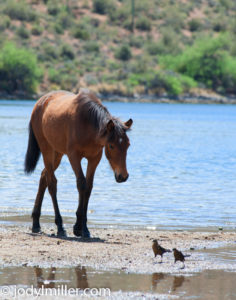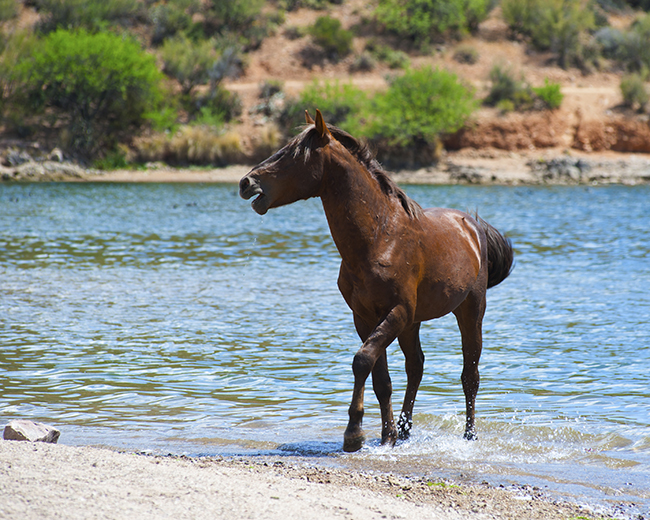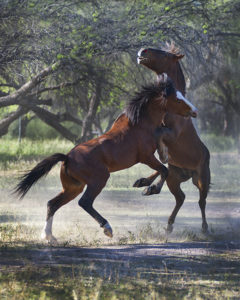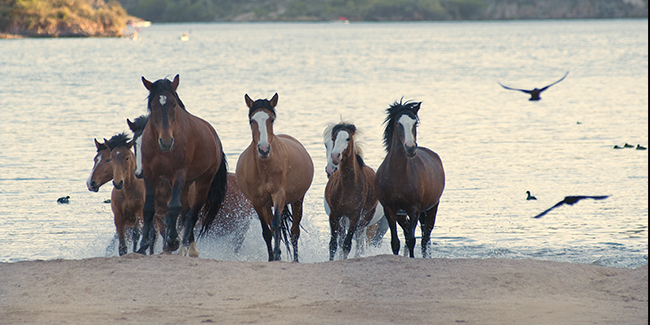Is Congress planning to kill wild horses?
 I try and stay out of political discussions as much as possible but in mid July one of my photographs of the Salt River Wild Horses was used by USA Today for an article about The Stewart Amendment. writes “After debating the merits and flaws in plans to adopt or find ways to limit the population of an estimated 67,000 wild horses through contraceptive darting, the House Appropriations Committee voted to remove language from the Interior Department’s budget that would have prohibited “the destruction of healthy, unadopted wild horses and burros in the care of” the Bureau of Land Management or its contractors. It passed by voice vote.”
I try and stay out of political discussions as much as possible but in mid July one of my photographs of the Salt River Wild Horses was used by USA Today for an article about The Stewart Amendment. writes “After debating the merits and flaws in plans to adopt or find ways to limit the population of an estimated 67,000 wild horses through contraceptive darting, the House Appropriations Committee voted to remove language from the Interior Department’s budget that would have prohibited “the destruction of healthy, unadopted wild horses and burros in the care of” the Bureau of Land Management or its contractors. It passed by voice vote.”
He goes on to say later in the article that “President Trump’s proposed 2018 budget cuts funding to the wild horse management program and would drop rules preventing BLM from selling captured wild horses to slaughterhouses.”
80% of Americans support protecting Wild Horses
Recent polls show that 80 percent of Americans support protecting wild horses on our public lands and oppose slaughtering them. The American people have made it clear over and over that we do not stand for this idea of slaughtering our wild horses, yet Congress continues to move forward with an amendment that would do exactly that. It’s really quite disturbing.
Suzanne Roy, Campaign Director of the American Wild Horse Preservation Campaign, is a 20-year animal welfare
professional. In a recent article Suzanne wrote “Rather than implement a one-size-kills-all solution, the department should scientifically study how many wild horses and burros should roam the range, firmly keeping in mind that the American public wants them on public lands…Congress should also call on the department and bureau to make increased use of fertility control to manage horses humanely on the range.”
In 1971, with concerns that the numbers were dwindling, Congress passed the Wild Free-Roaming Horse and Burro Act, which directed the Bureau of Land Management (BLM) to manage herds to “maintain a thriving natural ecological balance. Since then, the wild horse population has tripled and is projected to reach 115,000 by 2020.
When the 1971 act passed, it allowed the BLM to destroy healthy horses and burros if populations grew too large,” said Gillian Lyons, a wildlife fertility control policy manager at The Humane Society of the United States. “Since 1994, save one year, appropriation language has prevented the agency from being able to do that.”
Last year I enjoyed a few days on the Salt River in Tonto National Forest taking photographs of the Salt River Wild Horses. For those authors and contributors writing about this hot topic: I have an assortment of Wild Horse photos on my website that are available for license.
Jody Miller is a professional photographer specializing in Horse Photography, Equine Photography, and Equestrian photography. Her work can be viewed online here in her gallery section, and she is also featured at these Arizona Galleries: Arts Prescott Gallery CO-OWNER, Dragonfly Arts in Cottonwood and Coops Coffee House at Talking Rock Ranch, Prescott Family Diner. Jody is also participating in the Prescott Area Artists’ Studio Tour Oct.6, 7 and 8, 2017


